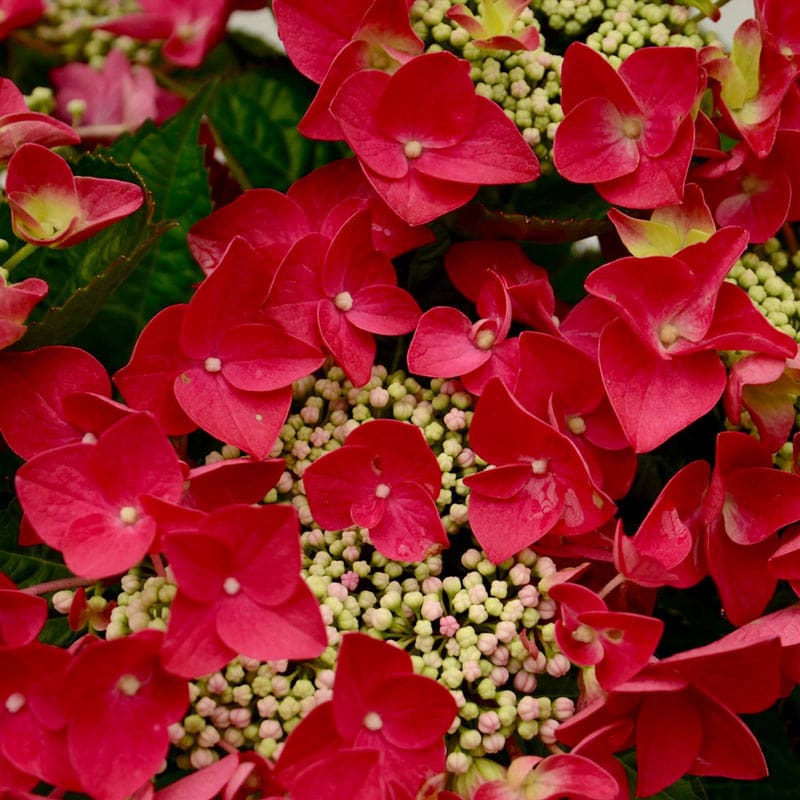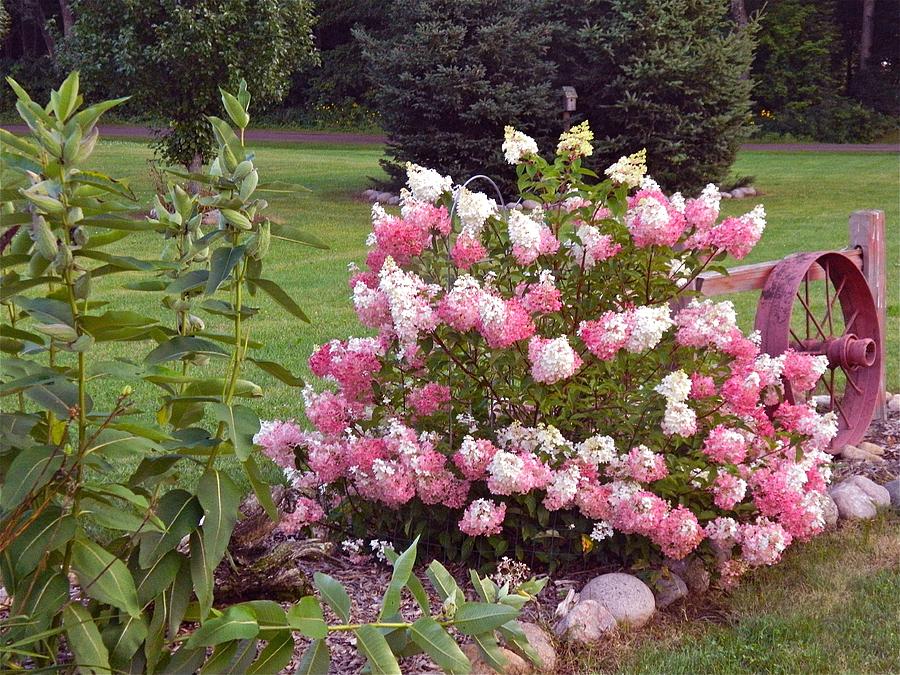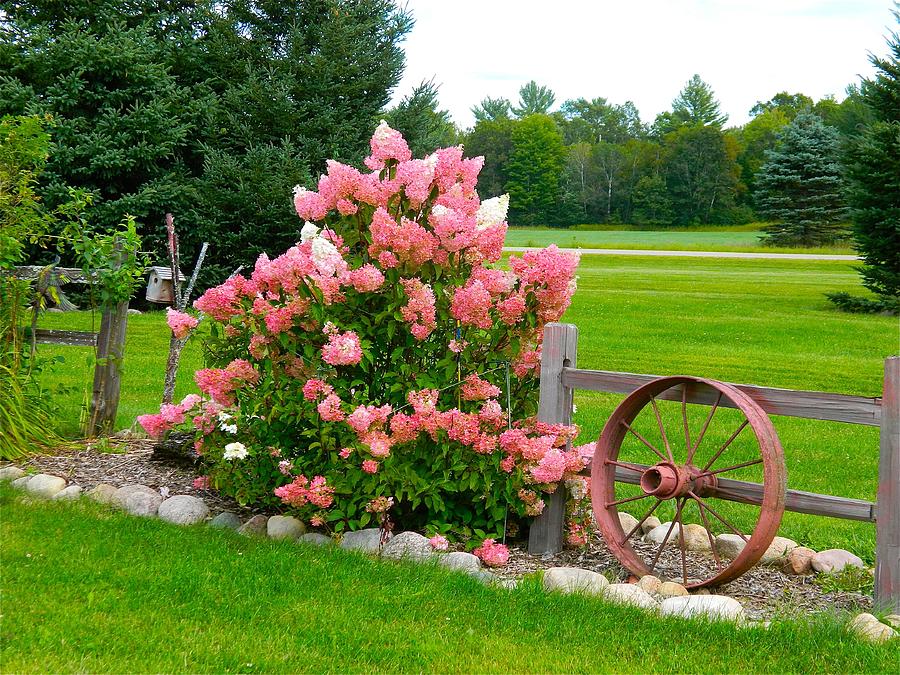The Sweetest Hydrangea On The Block:
Hydrangeas are some of the most popular flowering shrubs in the world, and for good reason. They come in a wide variety of colors, sizes, and shapes, and they can be grown in a variety of climates. If you're looking for a beautiful and easy-to-care-for shrub to add to your garden, a hydrangea is a great choice.
In this blog post, we'll take a look at the different types of hydrangeas, how to choose the right one for your garden, and how to care for your hydrangeas so that they thrive. We'll also share some tips for troubleshooting common hydrangea problems.
Types of Hydrangeas
There are two main types of hydrangeas: bigleaf hydrangeas (Hydrangea macrophylla) and panicle hydrangeas (Hydrangea paniculata). Bigleaf hydrangeas are the most common type of hydrangea, and they're known for their large, showy flowers. Panicle hydrangeas are less common, but they're also very beautiful. They have smaller flowers than bigleaf hydrangeas, but they're more fragrant.
In addition to these two main types, there are also a number of other types of hydrangeas, including mountain hydrangeas (Hydrangea serrata), oakleaf hydrangeas (Hydrangea quercifolia), and climbing hydrangeas (Hydrangea petiolaris).
Choosing the Right Hydrangea for Your Garden
When choosing a hydrangea for your garden, there are a few things to keep in mind. First, consider the size of the hydrangea you want. Bigleaf hydrangeas can grow quite large, so if you have limited space, you may want to choose a smaller variety. Panicle hydrangeas are generally smaller than bigleaf hydrangeas, but they can still get quite large.
Second, consider the climate in your area. Hydrangeas are hardy in zones 3-9, but some varieties are more cold-hardy than others. If you live in a cold climate, you'll want to choose a hydrangea that is known for its cold hardiness.
Finally, consider the color of the hydrangea you want. Hydrangeas come in a wide variety of colors, including blue, pink, purple, white, and green. The color of your hydrangea's flowers will depend on the pH of the soil in your garden. In acidic soil, hydrangeas will bloom blue. In alkaline soil, they will bloom pink.
Caring for Hydrangeas
Hydrangeas are relatively easy to care for, but there are a few things you need to do to keep them healthy. First, hydrangeas need full sun or partial shade. They also need well-drained soil. If your soil is heavy clay, you may need to add some sand or compost to improve drainage.
Hydrangeas need regular watering, especially during the summer months. Water your hydrangeas deeply once a week, or more often if the weather is hot and dry.
Hydrangeas also need to be fertilized. You can fertilize your hydrangeas in the spring and fall with a balanced fertilizer.
Troubleshooting Common Hydrangea Problems
Hydrangeas are generally problem-free plants, but there are a few common problems that you may encounter.
- Leaf scorch: Leaf scorch is a common problem that occurs when hydrangeas are planted in too much sun. The leaves of a hydrangea that is suffering from leaf scorch will turn brown and crispy. If you think your hydrangea is suffering from leaf scorch, move it to a shadier location.
- Pests and diseases: Hydrangeas are susceptible to a few pests and diseases, including aphids, spider mites, and powdery mildew. If you see any pests or diseases on your hydrangea, treat them immediately with an insecticidal soap or fungicide.
Conclusion
Hydrangeas are beautiful and easy-to-care-for shrubs that can add a touch of elegance to any garden. With proper care, your hydrangeas will thrive for years to come.
If you're looking for a beautiful and versatile hydrangea, the "strawberries and cream" variety is a great option. These stunning flowers start out as a light pink color in the spring, then gradually fade to a creamy white as the summer progresses. The result is a truly stunning display of color that will brighten up any garden.
In addition to their beautiful flowers, strawberries and cream hydrangeas are also relatively easy to care for. They prefer full sun, but can tolerate partial shade. They are also drought-tolerant once established, and only need to be watered deeply once a week.
If you're interested in learning more about strawberries and cream hydrangeas, I recommend visiting . This website has a wealth of information about this variety, including care tips, planting instructions, and photos of the flowers in bloom.
FAQ of strawberries and cream hydrangea
1. What is a strawberries and cream hydrangea?
A strawberries and cream hydrangea is a type of hydrangea that blooms in shades of pink, white, and green. The flowers are typically large and round, and they have a delicate fragrance. Strawberries and cream hydrangeas are a popular choice for gardens because they are easy to care for and they add a touch of elegance to any landscape.
2. How tall do strawberries and cream hydrangeas get?
Strawberries and cream hydrangeas can grow up to 6 feet tall and 4 feet wide. However, they can be kept smaller by pruning.
3. What is the best soil for strawberries and cream hydrangeas?
Strawberries and cream hydrangeas prefer well-drained, slightly acidic soil. The soil should also be rich in organic matter.
4. How much sun do strawberries and cream hydrangeas need?
Strawberries and cream hydrangeas prefer partial shade. They can tolerate full sun, but they may not bloom as well.
5. How do I care for strawberries and cream hydrangeas?
Strawberries and cream hydrangeas are relatively easy to care for. They need regular watering, especially during hot, dry weather. They should also be fertilized in the spring and fall.
Image of strawberries and cream hydrangea
5 different images of "strawberries and cream hydrangea" from Pinterest:
- A close-up of a single strawberry and cream hydrangea flower. The petals are a pale pink with white streaks, and the center of the flower is a deep pink.

- A full bush of strawberry and cream hydrangeas. The flowers are in full bloom, and the bush is covered in a beautiful pink and white haze.

- A group of strawberry and cream hydrangeas planted in a garden. The flowers are in different stages of bloom, and the colors range from pale pink to deep pink.

- A close-up of the leaves of a strawberry and cream hydrangea. The leaves are a deep green, and they have a slightly wavy edge.

- A landscape image of a strawberry and cream hydrangea bush in a front yard. The bush is surrounded by other flowers, and it is in full bloom.

Post a Comment for "The Sweetest Hydrangea On The Block:"